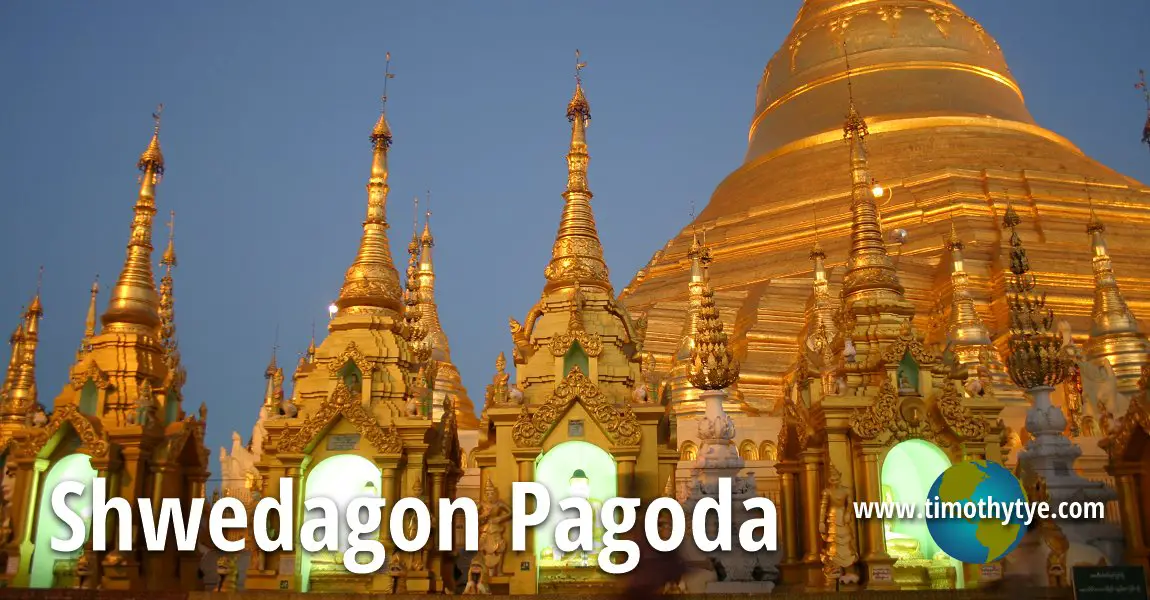 Shwedagon Pagoda, Yangon (20 November, 2003)
Shwedagon Pagoda, Yangon (20 November, 2003)
Shwedagon Pagoda (GPS: 16.79847, 96.14958) is a gigantic stupa in Yangon, Myanmar. It is the most iconic structure in Yangon for much of the city's history, and is also the most famous Burmese temple in Myanmar. Indeed, the Shwedagon is almost synonymous with Yangon, and indeed with Myanmar, and many visitors are hardpressed to name another worthy Myanmar landmark, if not for this one.
You can enter the Shwedagon complex by its four main entranceways, or take the elevator, which transport you immediately to the upper level.
History of the Shwedagon
According to legend, the founding of Shwedagon goes back to the time that Gaudama Buddha achieved Enlightenment, when he discovered the cause of universal suffering and the way to its elimination. The Buddha had appeared before King Okkalapa (in some publications, Ukkalapa) of the Mon people of Lower Burma, promising the king that his wish would be granted. So the king had sent two brothers, Taphussa and Bhallika, to the Buddha. A nat (spirit) who are their mother in a previous existence guided them to the Buddha, and they arrived on the 49th day of Enlightenment.The brothers offered the Buddha honey cakes called Kywet kyit. After Buddha had eaten the cakes, the brothers asked for gift. The Buddha passed His hand over His head and, obtaining eight stands of hairs which he gave to the brothers. As the three previous Buddhas had caused their possessions to be enshrined in a pagoda on one Singuttara Hill in the brothers' home country, the present Buddha asked them to do likewise with the sacred hairs.
The way home was equally treacherous. Along the journey, the brothers were robbed of two of Buddha's hairs by the King of Ajetta. Then, as they crossed the Bay of Bengal, another two hairs were snatched by the King of the Nagas, who lived on the sed bed. Nevertheless, the brothers eventually arrived home, where they were greated with a big feast by King Okkalapa returned home, arriving at a place called Pagoda Point in the south-west coast of Myanmar. They sent a message to King Ukkalapa, who threw a big ceremony to welcome the sacred hair. All this took place in Asitanzana, north-west of present Yangon.
When the king opened the casket containing the hairs, to his surprise all eight hairs are back in place. As he gazed at it in wonder, the hairs started to emit a brilliant light. Suddenly, the blind people everywhere could see, the deaf could hear, the dumb could speak and the lame could walk. The earth shook and lightning flashed. The king decided that the hairs would be enshrined in Singuttara Hill, just like the previous relics, but he did not know where this hill is located. After consultation with nat spirits, they discovered that Singuttara Hill is also known by other names, one of them Trikhumba, which means three pots, because the hill is shaped like three pots. And so Buddha's Hairs were enshrined and stupa consecrated on the full moon day of Tabaung (March 6, circa 588 B.C.)
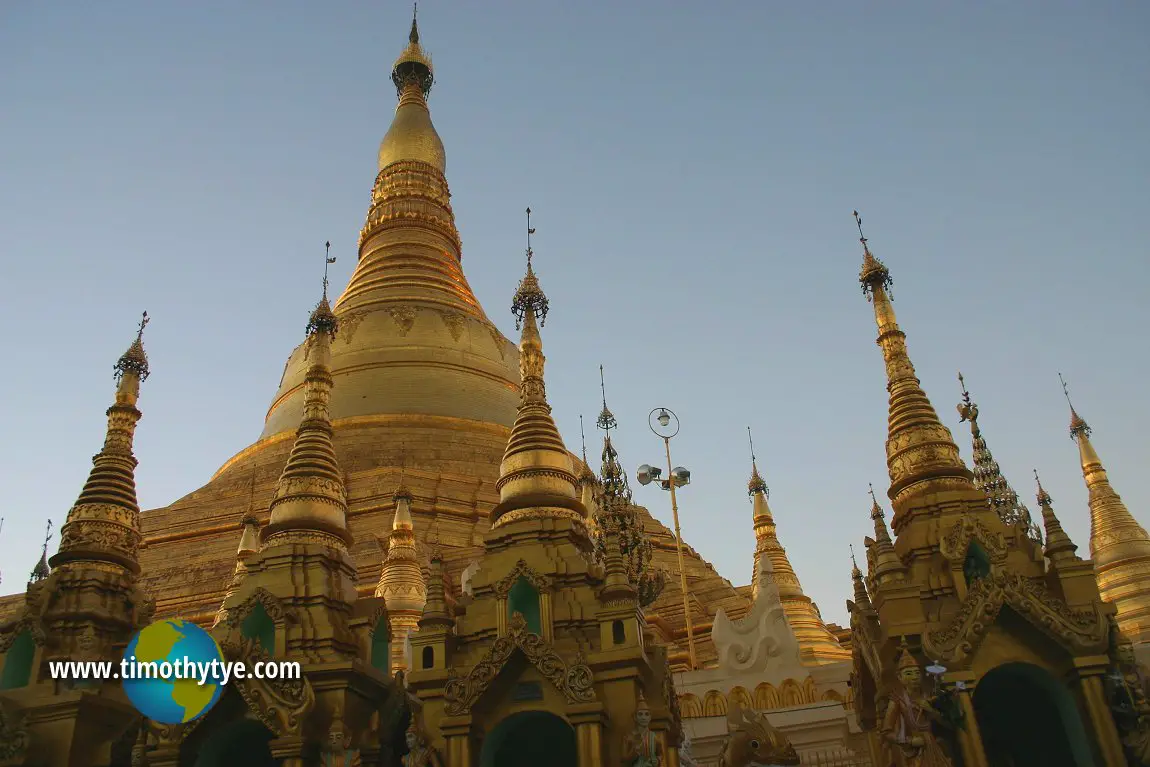 My first shot of Shwedagon Pagoda upon arrival. (20 November, 2003)
My first shot of Shwedagon Pagoda upon arrival. (20 November, 2003)
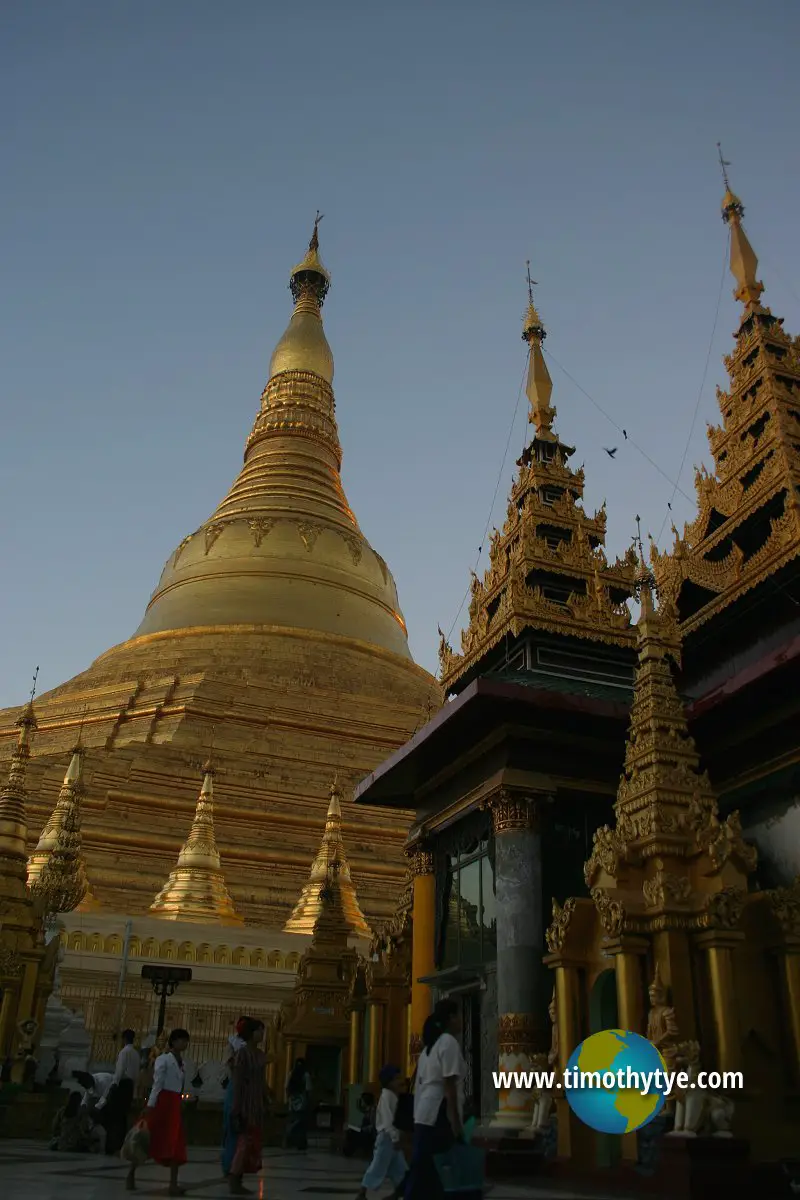 View of the Shwedagon Pagoda with one of its auxiliary pavilions in the foreground. (20 November, 2003)
View of the Shwedagon Pagoda with one of its auxiliary pavilions in the foreground. (20 November, 2003)
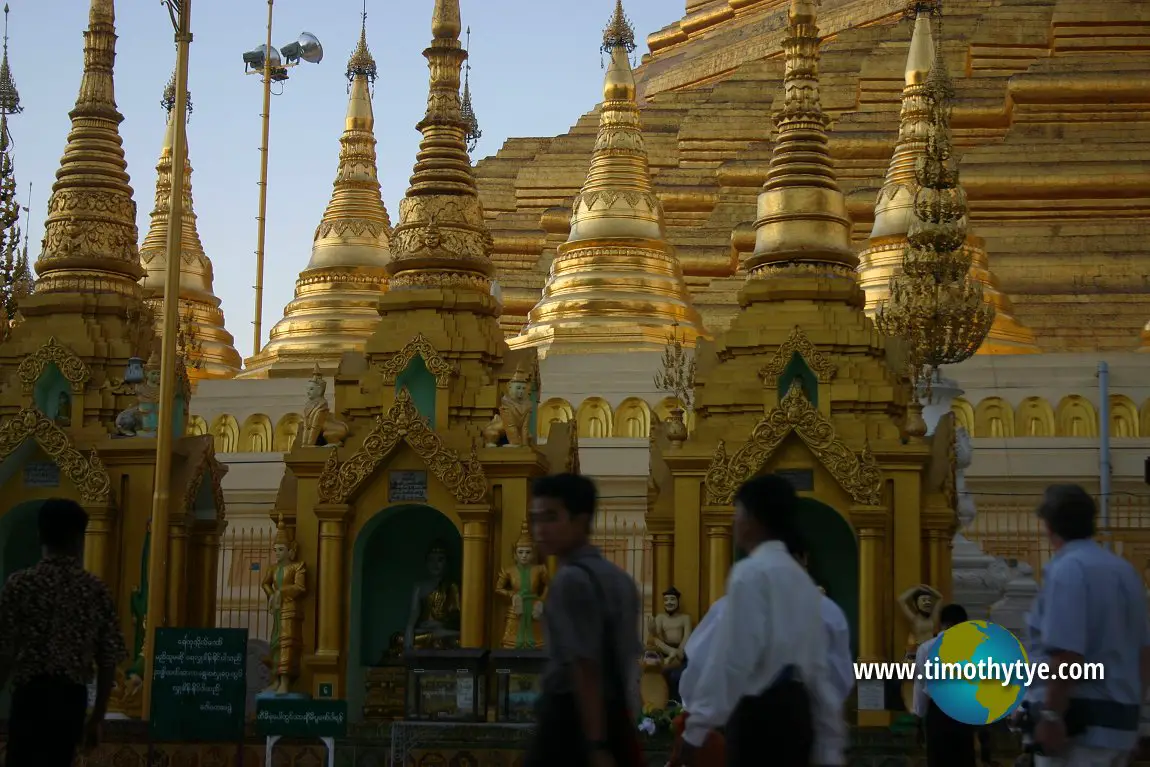 Visitors and devotees walking past the numerous stupas of Shwedagon Pagoda. (20 November, 2003)
Visitors and devotees walking past the numerous stupas of Shwedagon Pagoda. (20 November, 2003)
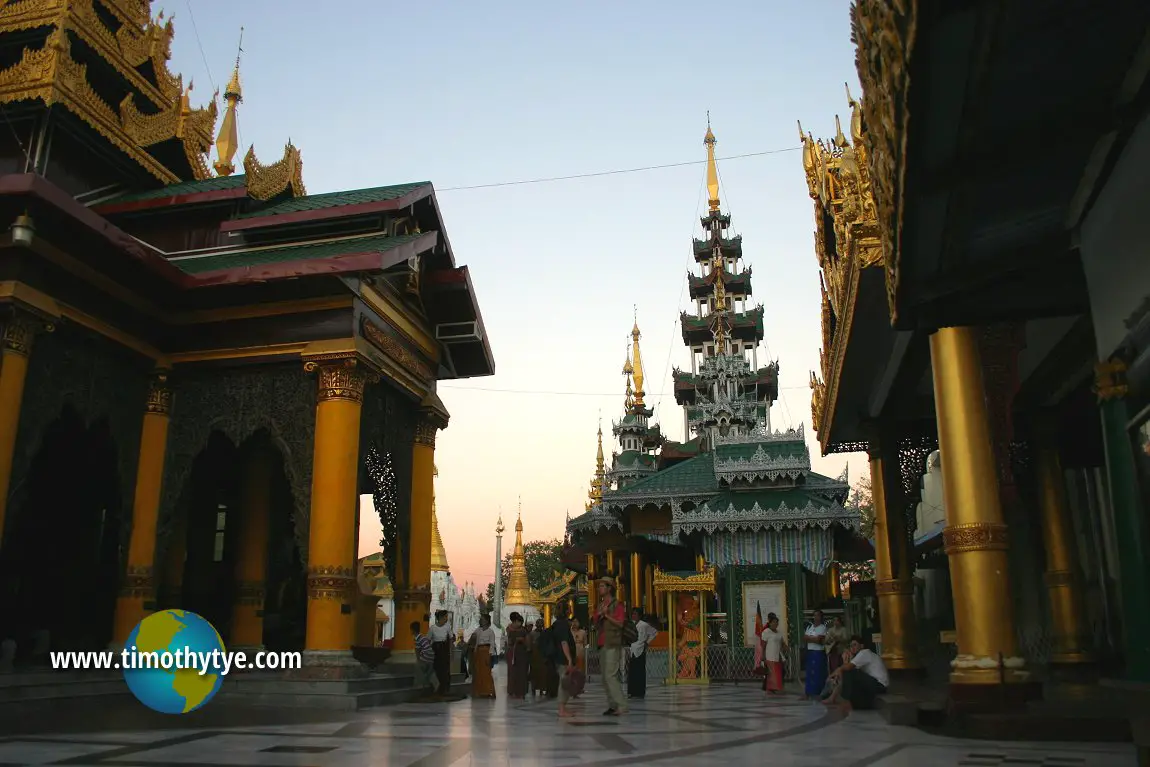 Surrounding the main pagoda of Shwedagon are numerous pavilions that exemplify Burmese architecture. (20 November, 2003)
Surrounding the main pagoda of Shwedagon are numerous pavilions that exemplify Burmese architecture. (20 November, 2003)
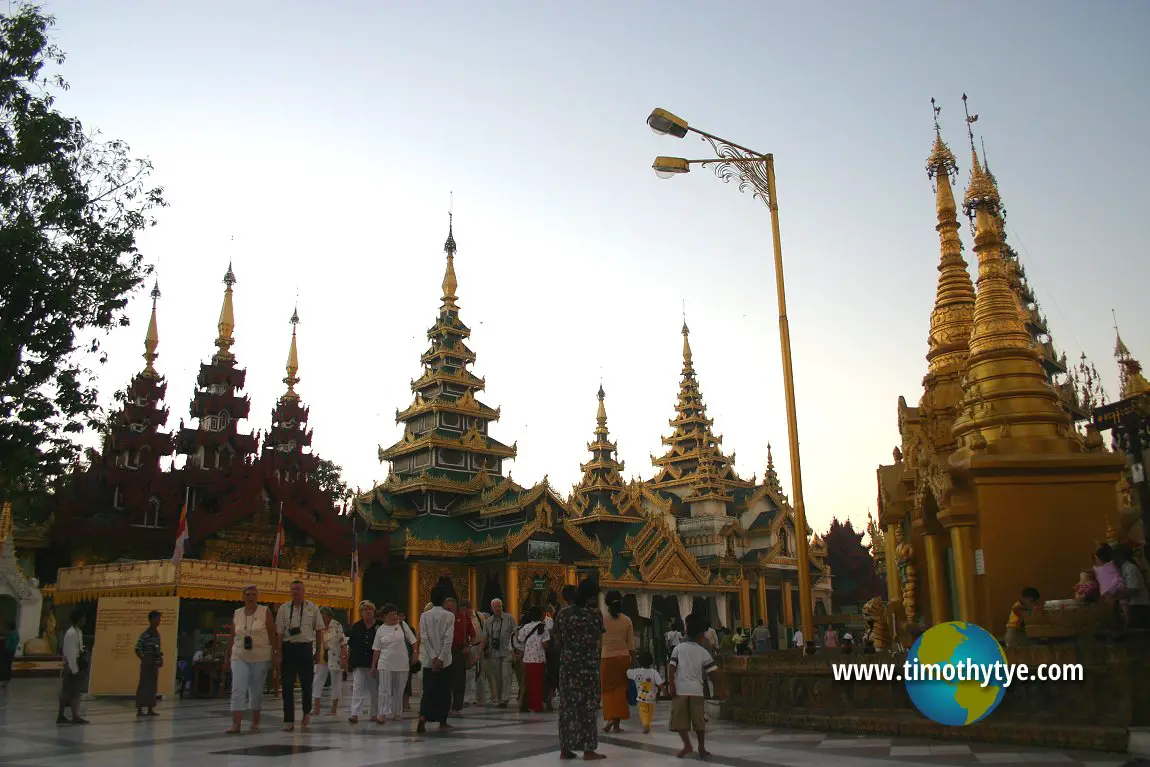 Domestic and foreign tourists walking around the central court of Shwedagon Pagoda. (20 November, 2003)
Domestic and foreign tourists walking around the central court of Shwedagon Pagoda. (20 November, 2003)
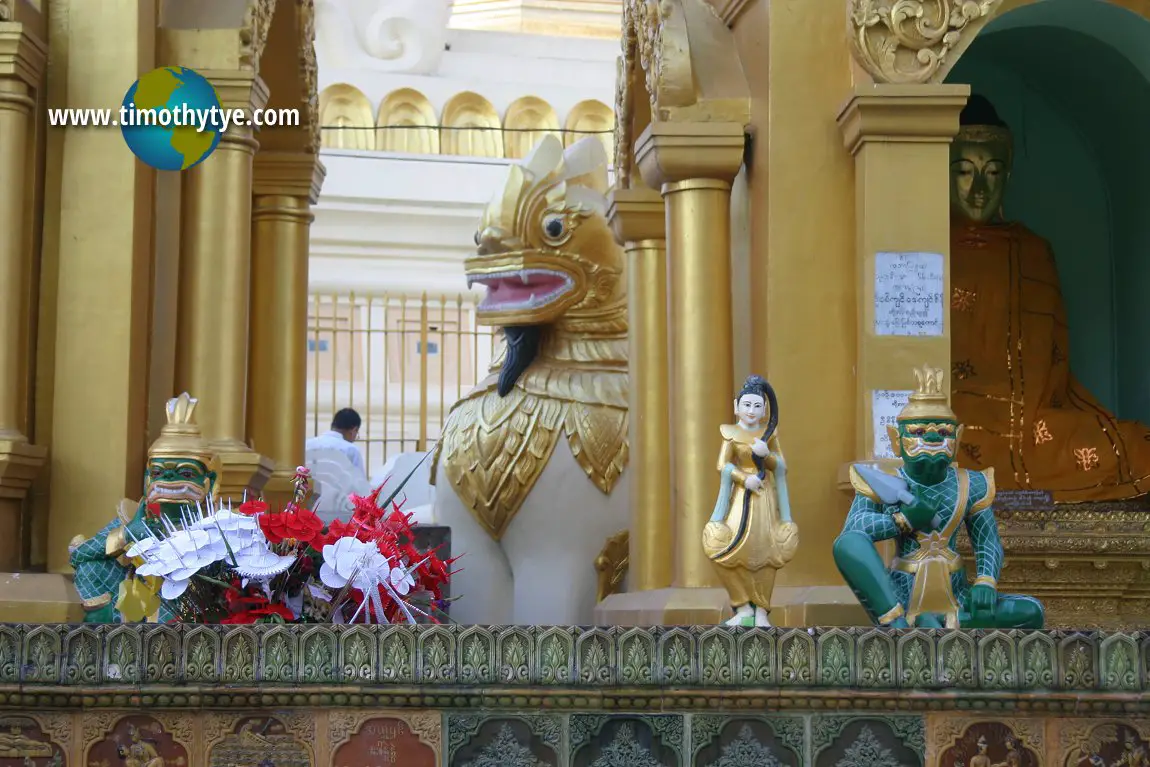 At eye level, there are many figurines and statues including the Chinthe (guardian lion), Hanuman and Mae Toranee. (20 November, 2003)
At eye level, there are many figurines and statues including the Chinthe (guardian lion), Hanuman and Mae Toranee. (20 November, 2003)
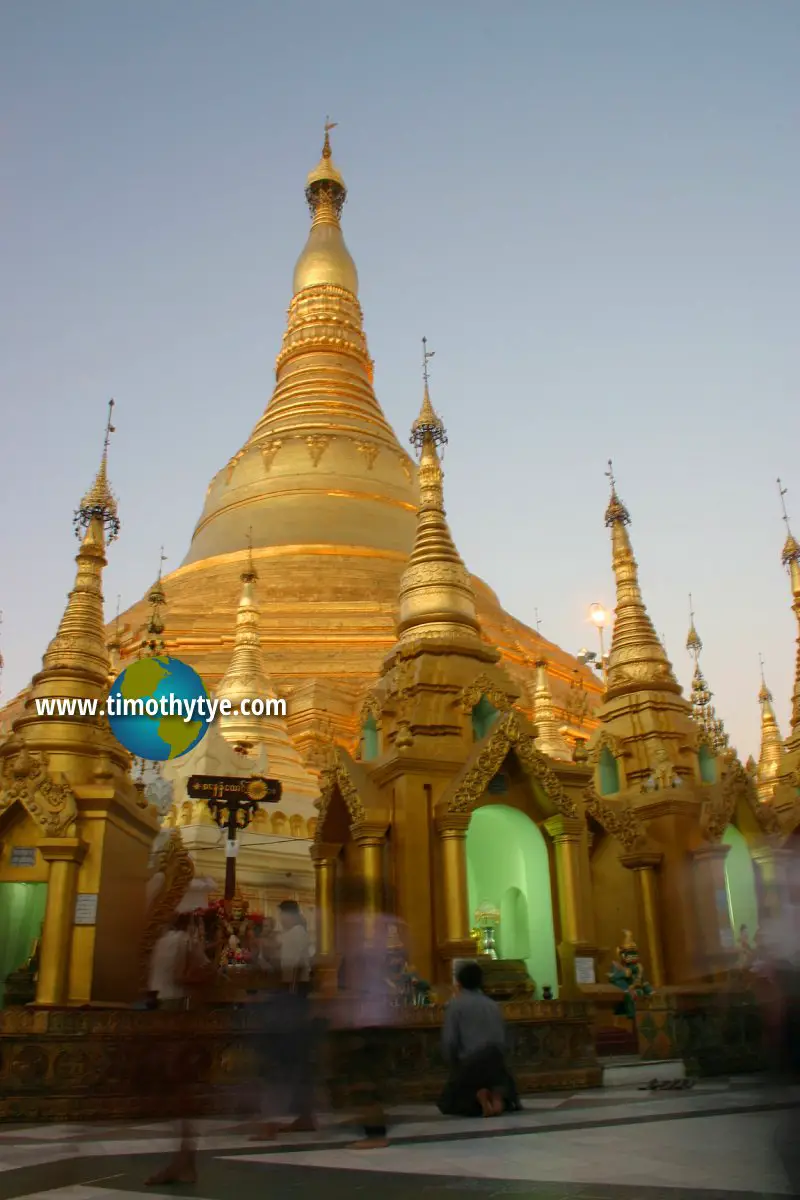 As night falls, the niche within each shrine is lit up. (20 November, 2003)
As night falls, the niche within each shrine is lit up. (20 November, 2003)
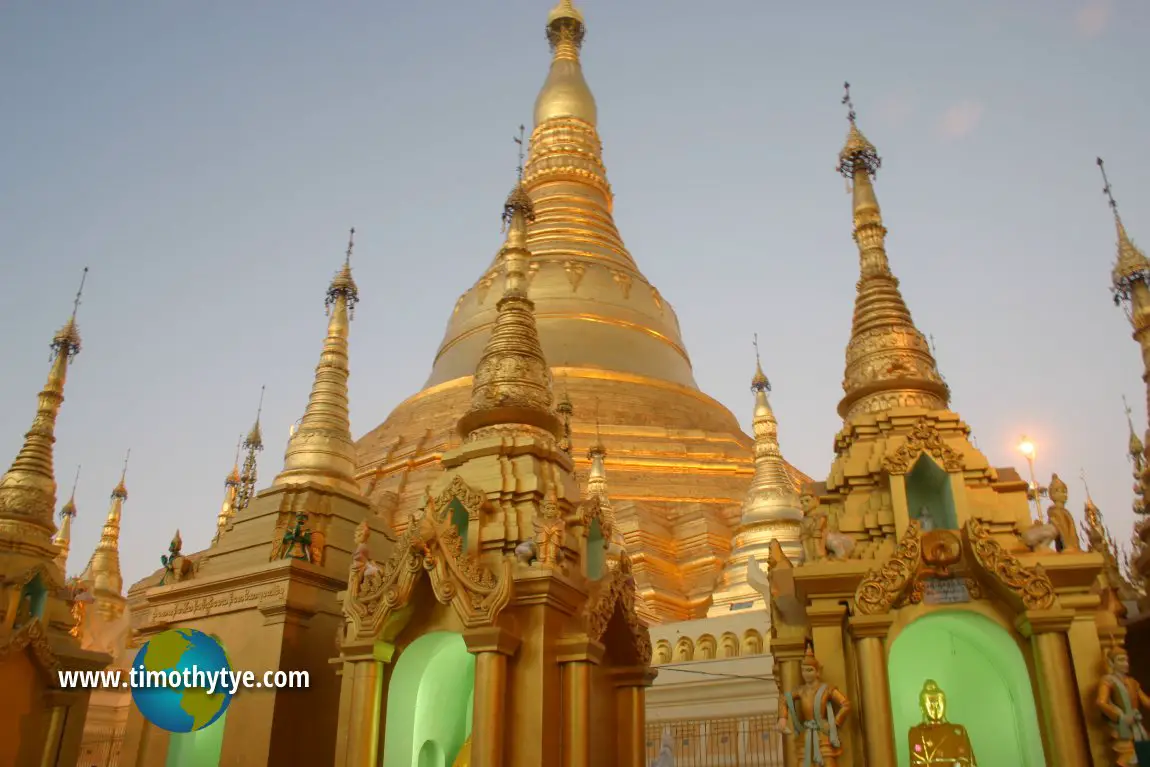 The main pagoda of Shwedagon and the shrines around it. (20 November, 2003)
The main pagoda of Shwedagon and the shrines around it. (20 November, 2003)
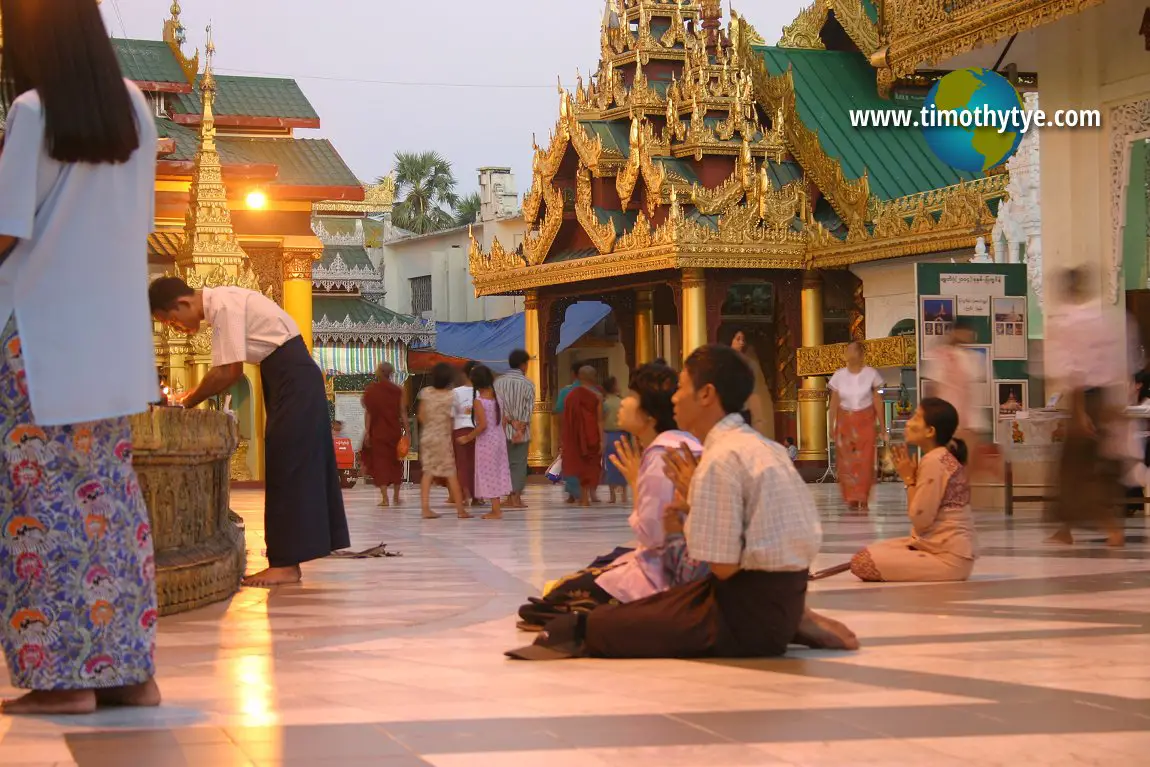 Devotees at Shwedagon. (20 November, 2003)
Devotees at Shwedagon. (20 November, 2003)
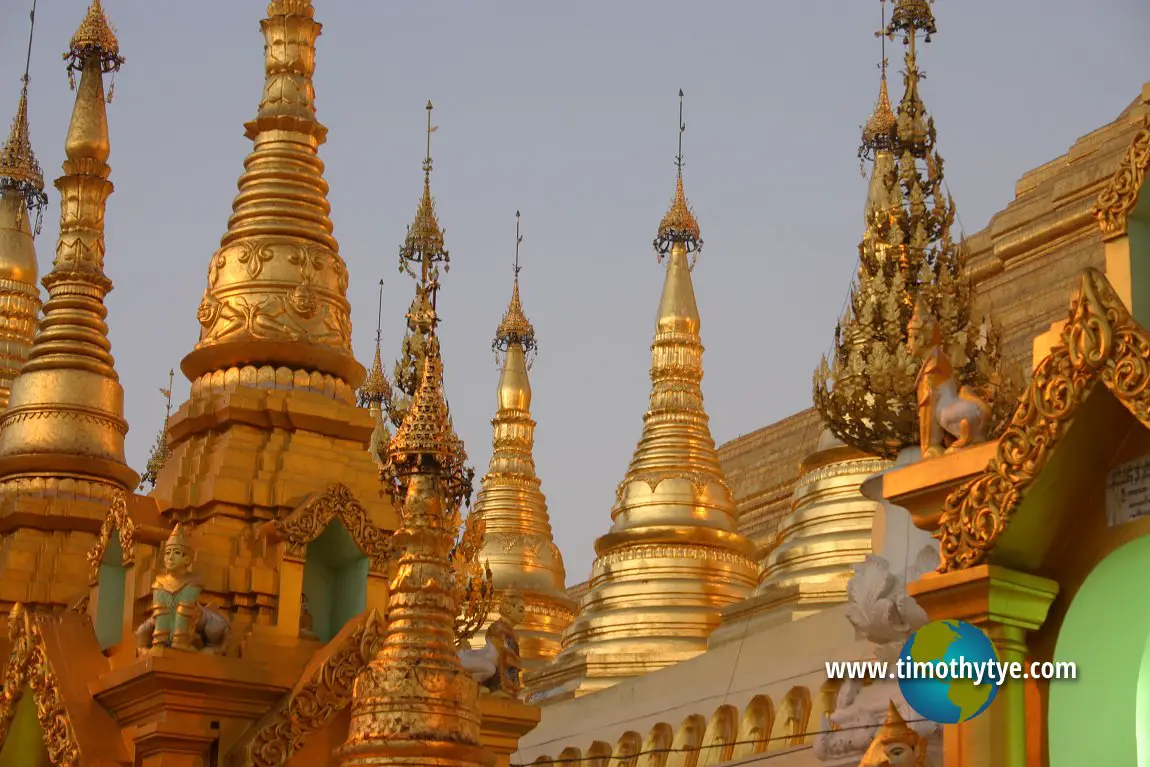 Shwedagon Pagoda is a forest of gilded spires. (20 November, 2003)
Shwedagon Pagoda is a forest of gilded spires. (20 November, 2003)
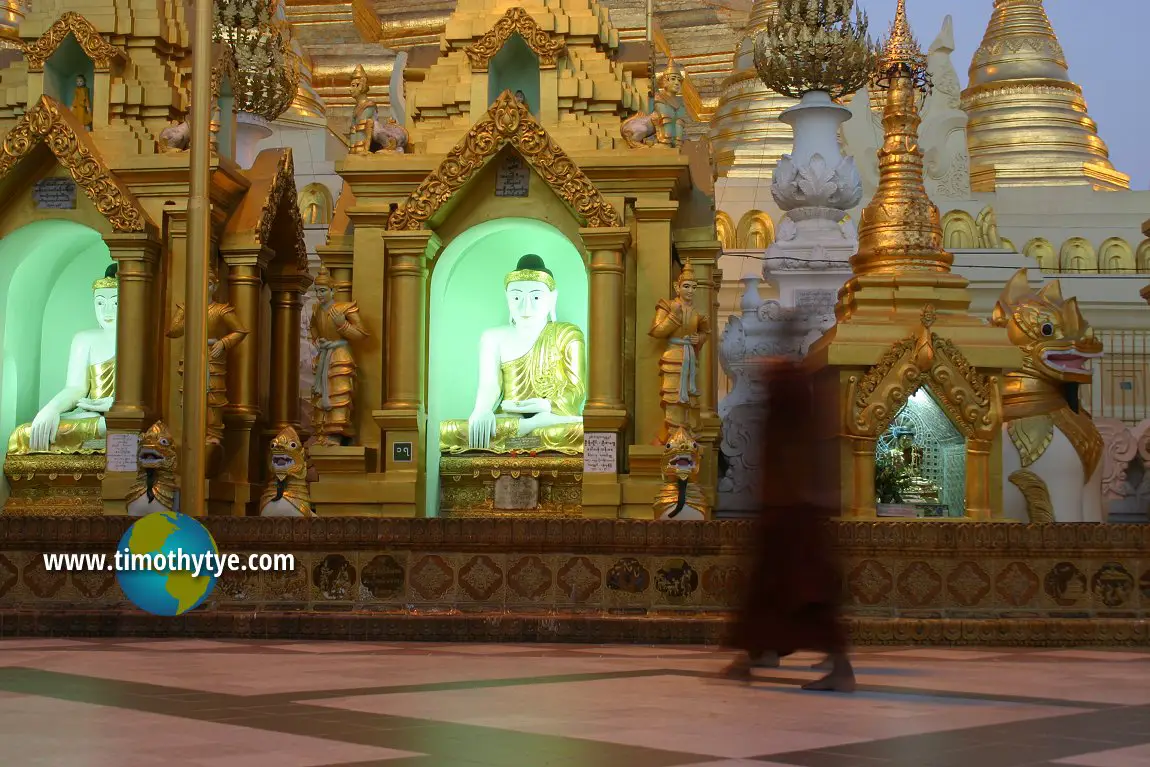 A Buddhist monk walking past the shrines at Shwedagon Pagoda. (20 November, 2003)
A Buddhist monk walking past the shrines at Shwedagon Pagoda. (20 November, 2003)
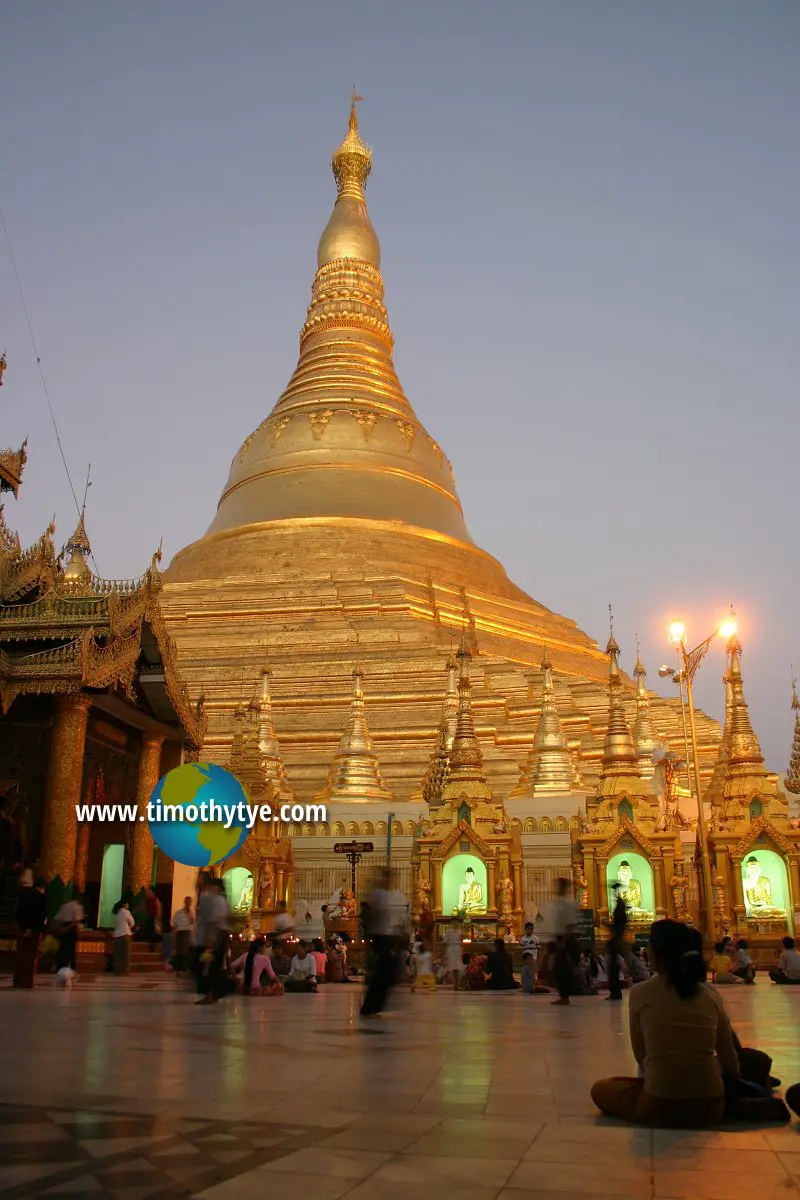 Devotees sat on the floor at the forecourt of the main pagoda of Shwedagon. (20 November, 2003)
Devotees sat on the floor at the forecourt of the main pagoda of Shwedagon. (20 November, 2003)
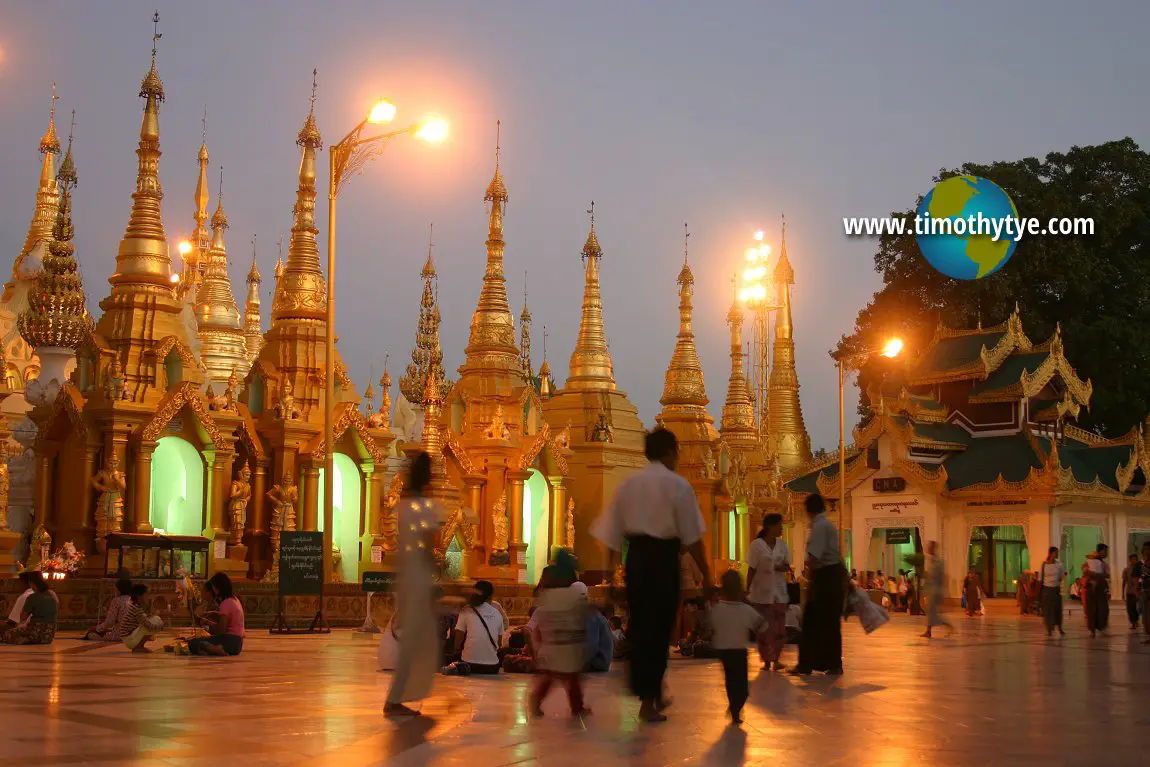 Whole families come to visit Shwedagon Pagoda. (20 November, 2003)
Whole families come to visit Shwedagon Pagoda. (20 November, 2003)
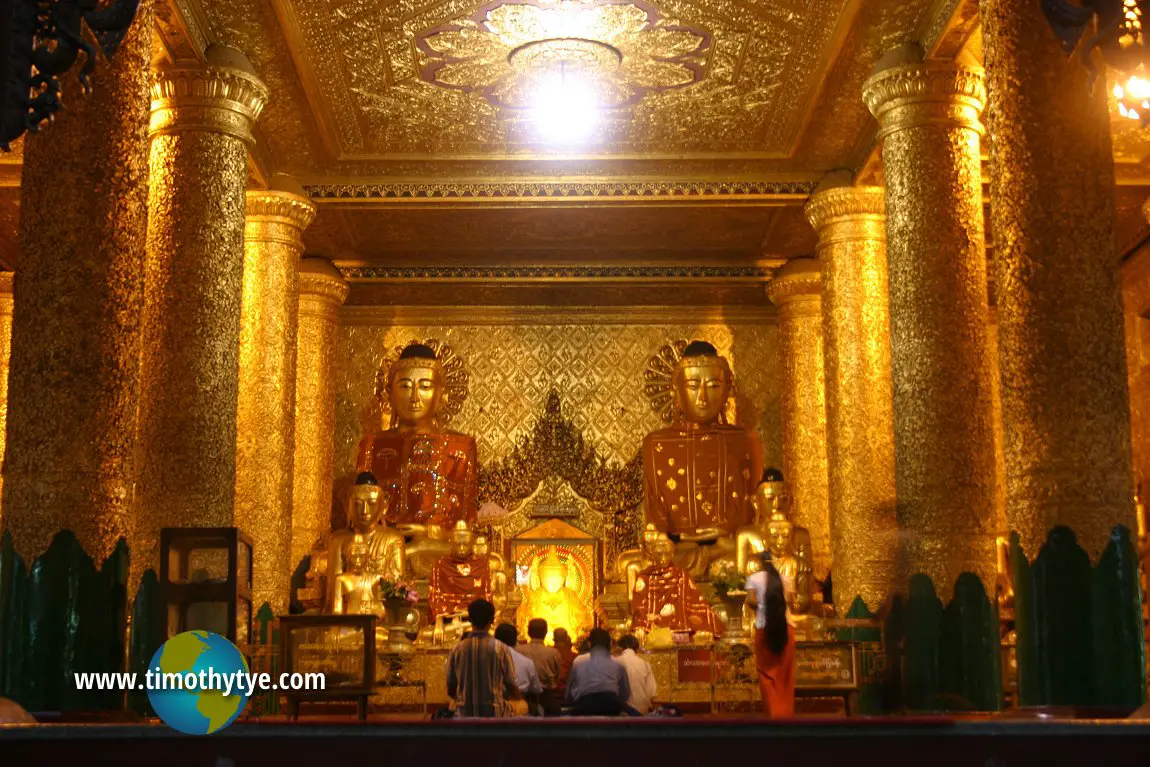 Within a gilded pavilion, devotees offering their worship. (20 November, 2003)
Within a gilded pavilion, devotees offering their worship. (20 November, 2003)
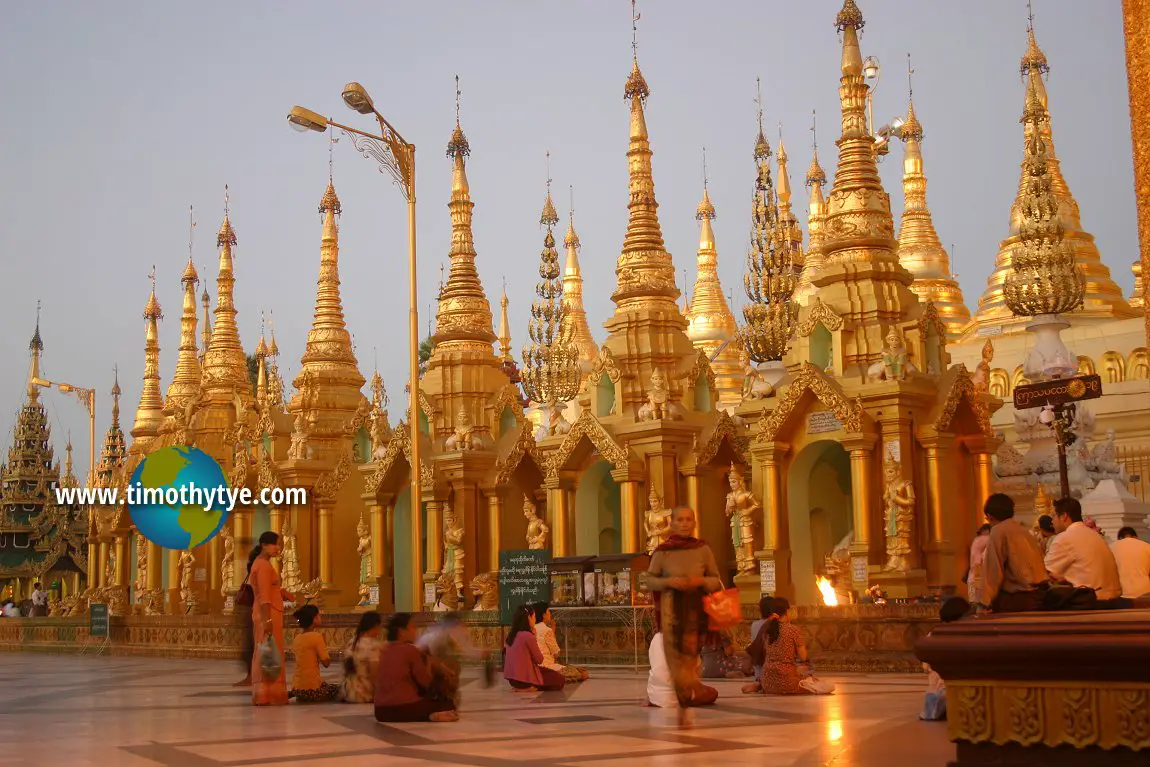 It boggles the mind trying to count the number of shrines and spires at Shwedagon Pagoda. (20 November, 2003)
It boggles the mind trying to count the number of shrines and spires at Shwedagon Pagoda. (20 November, 2003)
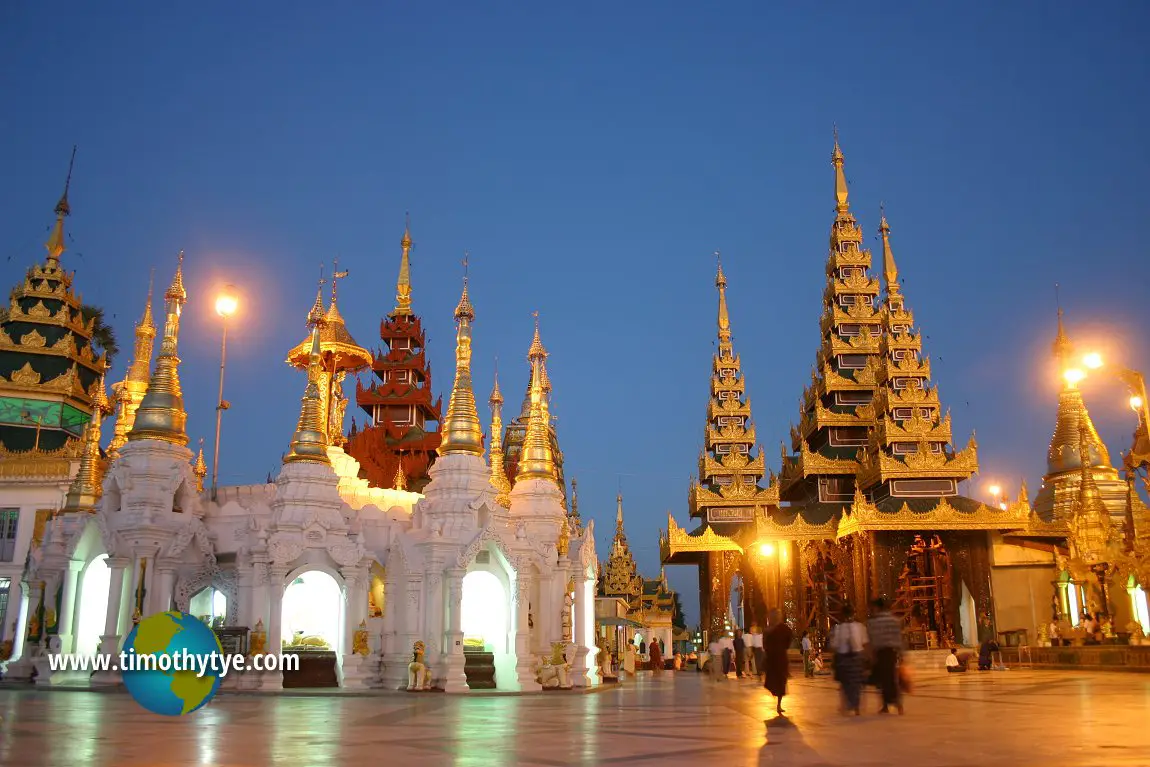 As night falls, the shrines and ancillary pavilions of Shwedagon Pagoda are all lit up. (20 November, 2003)
As night falls, the shrines and ancillary pavilions of Shwedagon Pagoda are all lit up. (20 November, 2003)
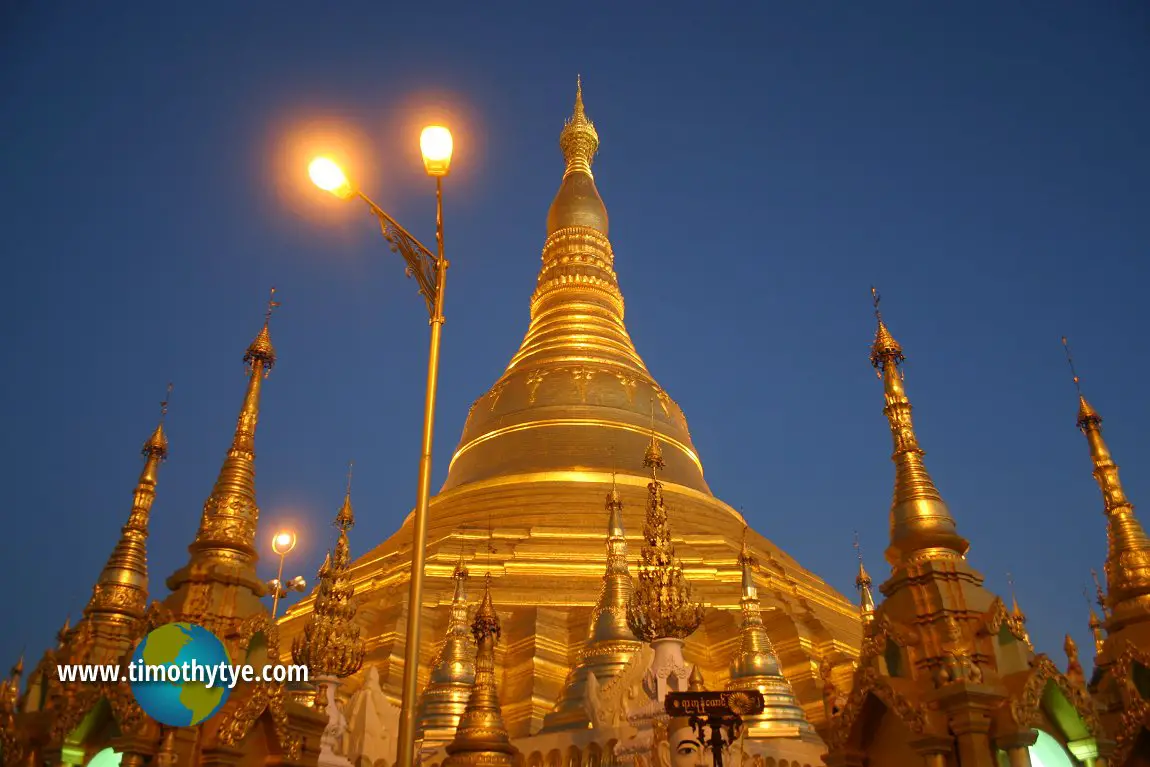 The main pagoda of Shwedagon gleams in the night. (20 November, 2003)
The main pagoda of Shwedagon gleams in the night. (20 November, 2003)
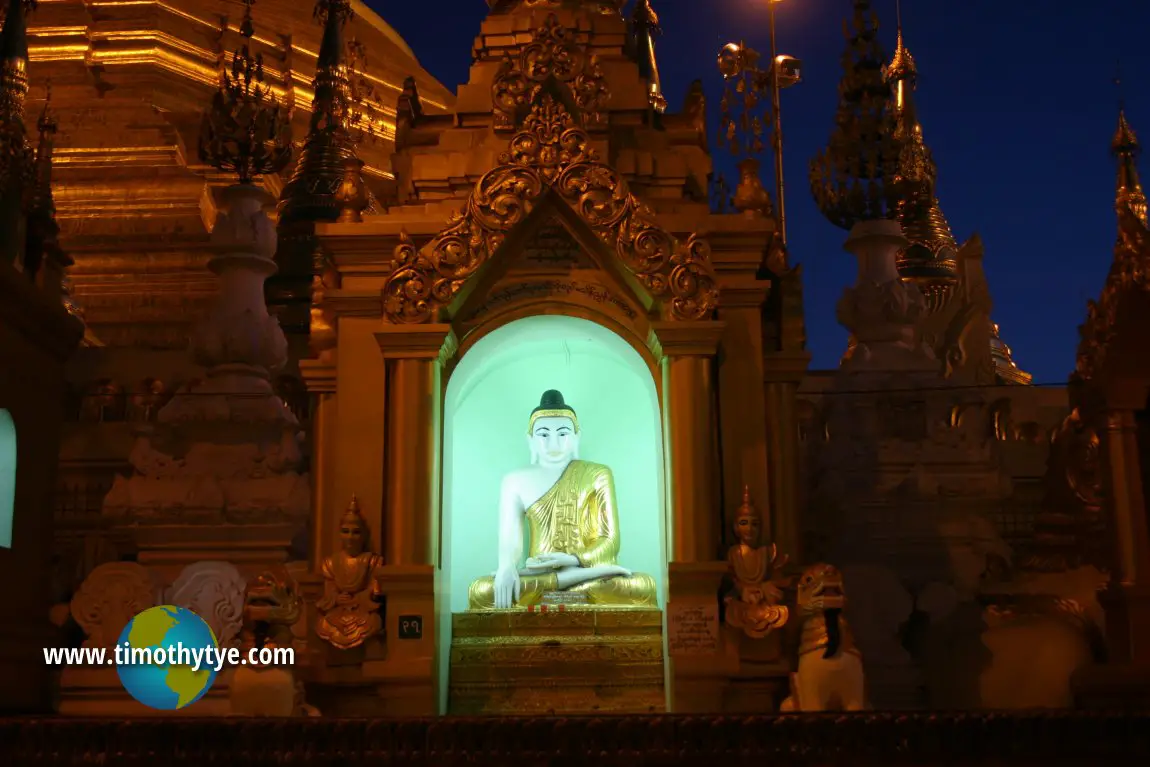 A seated Buddha statue within a shrine at Shwedagon Pagoda. (20 November, 2003)
A seated Buddha statue within a shrine at Shwedagon Pagoda. (20 November, 2003)
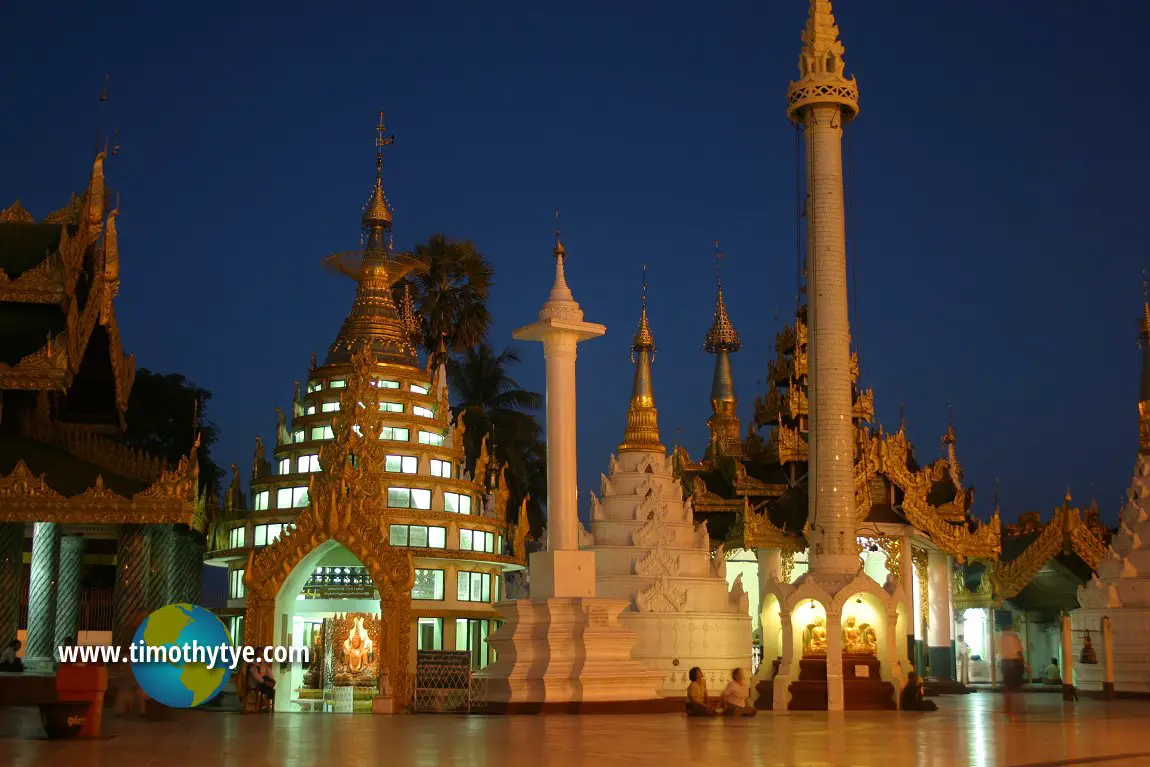 The ancillary pavilions of Shwedagon Pagoda come in various designs. (20 November, 2003)
The ancillary pavilions of Shwedagon Pagoda come in various designs. (20 November, 2003)
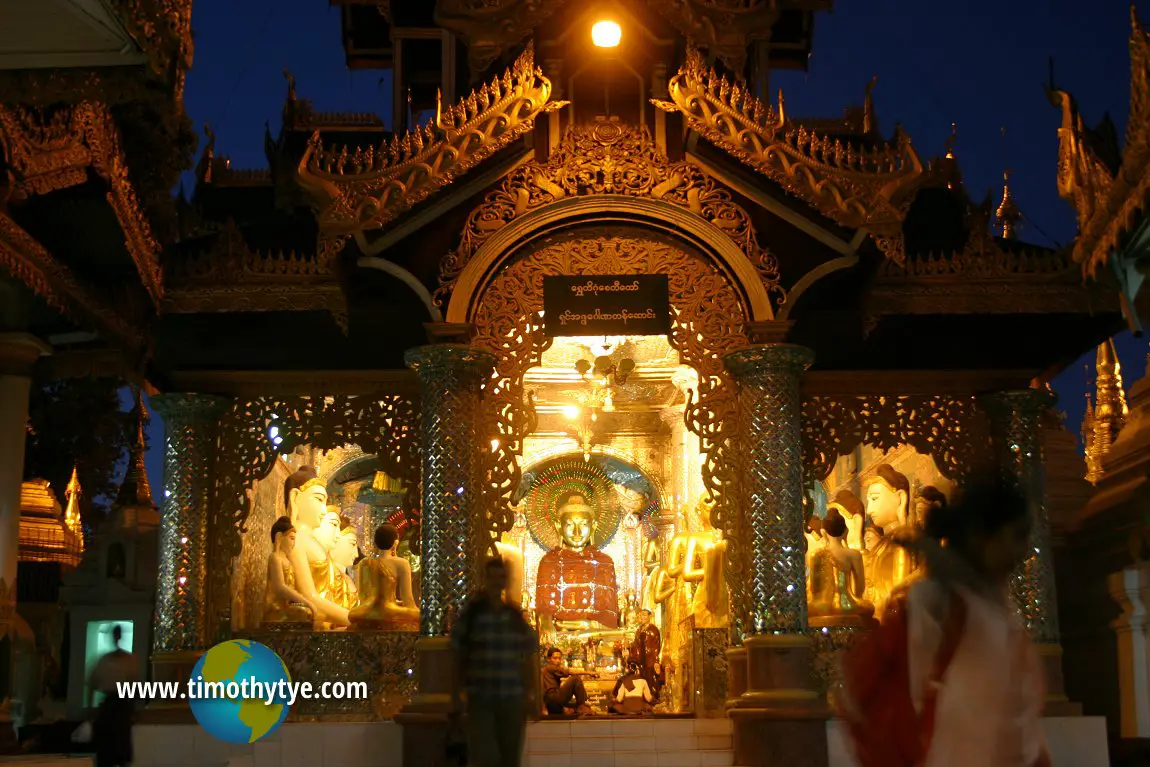 At every corner, there would be a pavilion housing a Buddha image. (20 November, 2003)
At every corner, there would be a pavilion housing a Buddha image. (20 November, 2003)
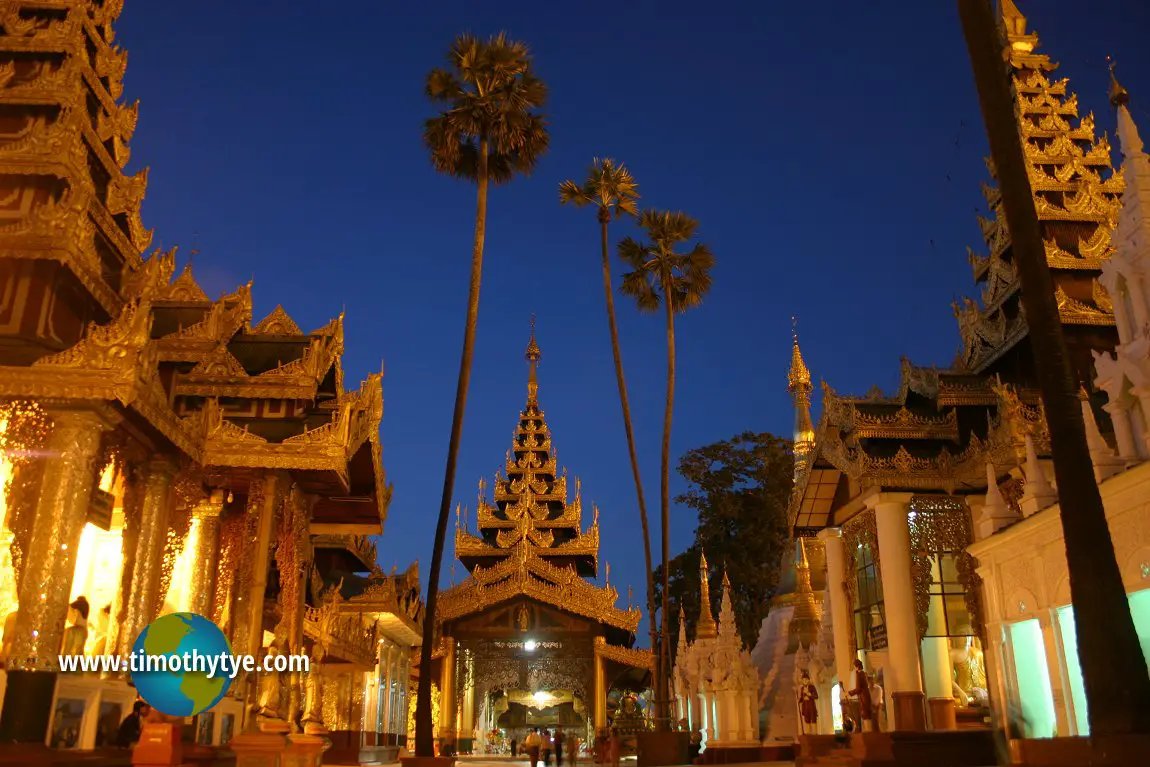 The pavilions of Shwedagon Pagoda, with sugarpalm trees, at the blue hour. (20 November, 2003)
The pavilions of Shwedagon Pagoda, with sugarpalm trees, at the blue hour. (20 November, 2003)
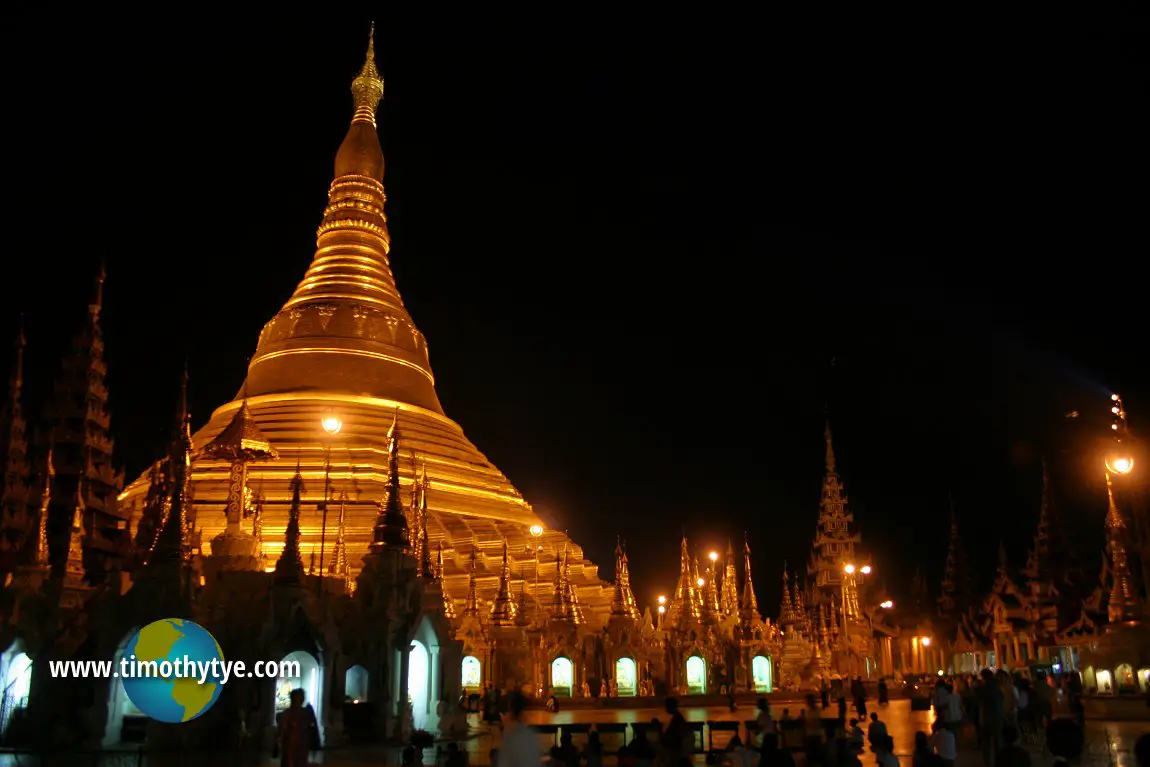 Eventually the sky has darkened completely over Shwedagon Pagoda. (20 November, 2003)
Eventually the sky has darkened completely over Shwedagon Pagoda. (20 November, 2003)
How Shwedagon got its name
The name Shwedagon comes from two words: shwe which means gold, and dagon, which is derived from the word Trikhumba, meaning three hills. Dagon became the name of where the Shwedagon stood, and also became the old name of the village where Yangon today stands.A long time after the shrine was built, it gradually fell into ruin and was covered with jungle. In around 543 BC., two monks from Sri Lanka, Sona and Uttara, brought King Asoka to the Pagoda. The King had the jungle cleared and the Pagoda repaired.
In the fifth century A.D. King Duttabaung paid homage at the Pagoda. In the 11th century, King Anawratha of Bagan offered gold and silver umbrellas and built a pagoda near the town of Twante across the Yangon River.
After the fall of Bagan in the 13th century and the reemergence of Mon power in the 14th with the capital at Bago, Dagon became an important religious centre. At one time, it was reported to contain thirty-two ordination halls.
It was Binnya U (1348-83), the Mon king of Bago who created a pagoda at Shwedagon. The initial height was 18 m. (60'). Successive Mon King of the 15th century raised the height of Pagoda by encasing earlier pagoda and embellishing the new. King Binnyayan (1426-46) cut down the hill and enlarged the base to five terraces to sustain the height. Unfortunately, he died before he could finish the work. His successor, King Binnyawaru (1446-50) who was helped by his mother, Queen Shin Saw Bu, the only regnant queen of Myanmar, raised the height of the Pagoda to 90.6 m(302').
Queen Shin Saw Bu was the first to gild the Pagoda. She went on the scales and let them take her weight which was a bout 40 kg.(90 lbs). Then she donated her own weight in gold, to be beaten and used to plate the stupa. Her successor King Dhammazedi went even further, by donating four times his own weight in gold. He also erected the stone inscriptions standing on Pagoda Hill. The inscriptions tell of the history of the pagoda, in three languages, Burmese, Pali and Mon. The inscriptions can still be seen today. He also donated a huge bell - at 30 tons, it was the biggest in the world. In 1608 the Portuguese mercenary Philip de Brito y Nicote plundered it but it fell into the Bago river and has never been recovered.
The renovations to Shwedagon
In 1572, King Bayinnaung rebuilt the Pagoda to 360 ft and had it regilded. The shrine had been damaged in an earthquake in 1564. Bayinnaung repeated the trip in 1581. After the founding of the Shwedagon Pagoda, Alaungpaya's conquest of Lower Burma is the second most important event in the history of Dagon. May 1775 marks the beginning of the modern town when Alaungpaya, to commemorate his victory, changed its name from Dagon to Yangon, "Enmity Exhausted."Shwedagon Pagoda is  on the map of Yangon
on the map of Yangon
 Latest updates on Penang Travel Tips
Latest updates on Penang Travel Tips
 Discover with Timothy YouTube Channel
Discover with Timothy YouTube Channel
 PG Food Channel
PG Food Channel
 Learn Penang Hokkien YouTube Channel
Learn Penang Hokkien YouTube Channel
 SojiMart Videos
SojiMart Videos
 Share your travels and/or ask a travel-related question
Share your travels and/or ask a travel-related question
Join the Penang Travel Tips Facebook Group to share photos, tips and anything related to your travels, or ask travel-related questions.
 Map of Roads in Penang
Map of Roads in Penang
Looking for information on Penang? Use this Map of Roads in Penang to zoom in on information about Penang, brought to you road by road. Discover with Timothy
Discover with Timothy
Let me take you to explore and discover Penang through my series of walking tours on YouTube. You may use these videos as your virtual tour guide. At the beginning of each video, I provide the starting point coordinates which you may key into your GPS, Google Maps or Waze, to be navigated to where I start the walk, and use the video as your virtual tour guide.Disclaimer
Please use the information on this page as guidance only. The author endeavours to update the information on this page from time to time, but regrets any inaccuracies if there be any.Latest from Discover with Timothy: Gurney Bay - what to see and do there
About this website

Hello and thanks for reading this page. My name is Timothy and my hobby is in describing places so that I can share the information with the general public. My website has become the go to site for a lot of people including students, teachers, journalists, etc. whenever they seek information on places, particularly those in Malaysia and Singapore. I have been doing this since 5 January 2003, for over twenty years already. You can read about me at Discover Timothy. By now I have compiled information on thousands of places, mostly in Peninsular Malaysia and Singapore, and I continue to add more almost every day. My goal is to describe every street in every town in Malaysia and Singapore.
Robbie's Roadmap
- Episode 1: Robbie's Journey to Financial Freedom
- Episode 2: Lost in America
- Episode 3: The Value of Money
- Episode 4: The Mentor
- Episode 5: The Thing that Makes Money
- Episode 6: The walk with a Billionaire
- Episode 7: The Financial Freedom Awakening
- Episode 8: Meet Mr Washington
- Episode 9: The Pizzeria Incident
Copyright © 2003-2024 Timothy Tye. All Rights Reserved.


 Go Back
Go Back